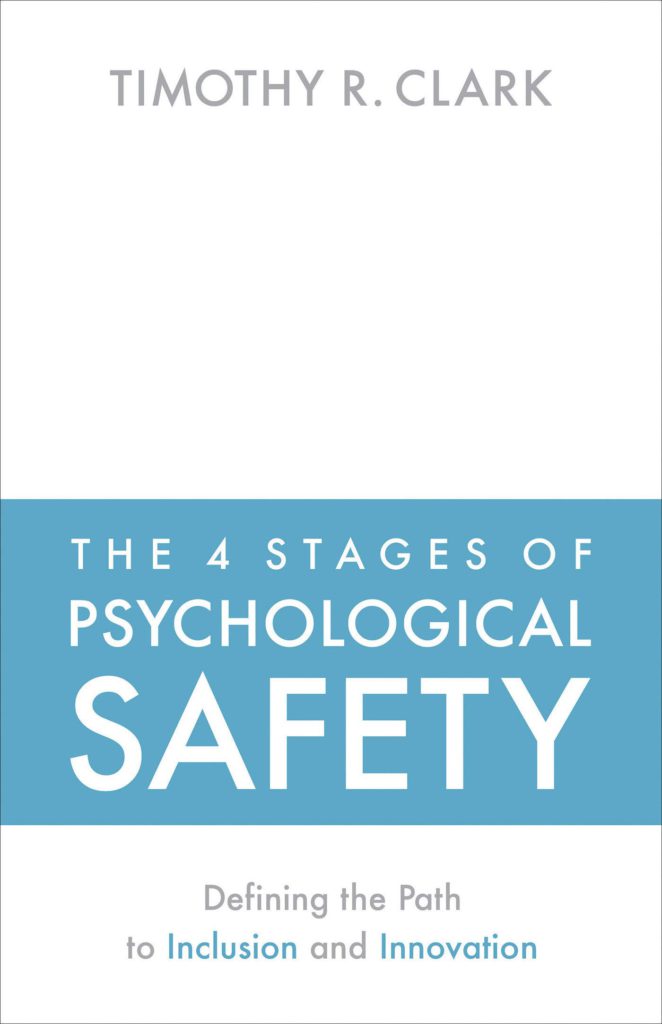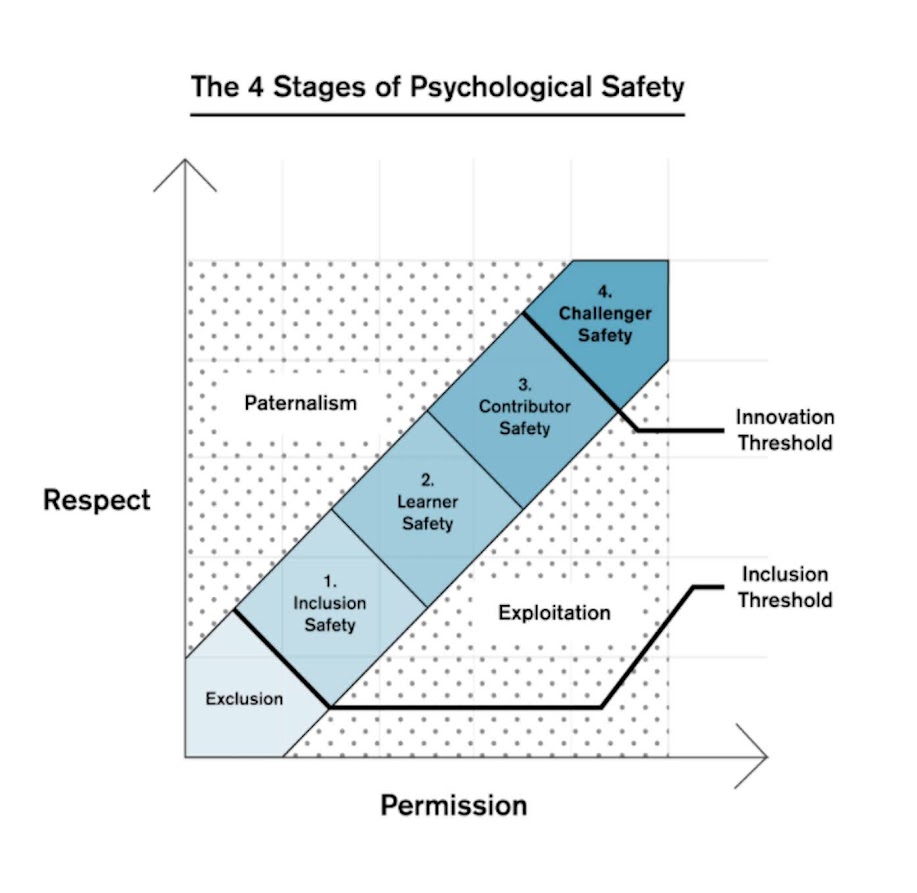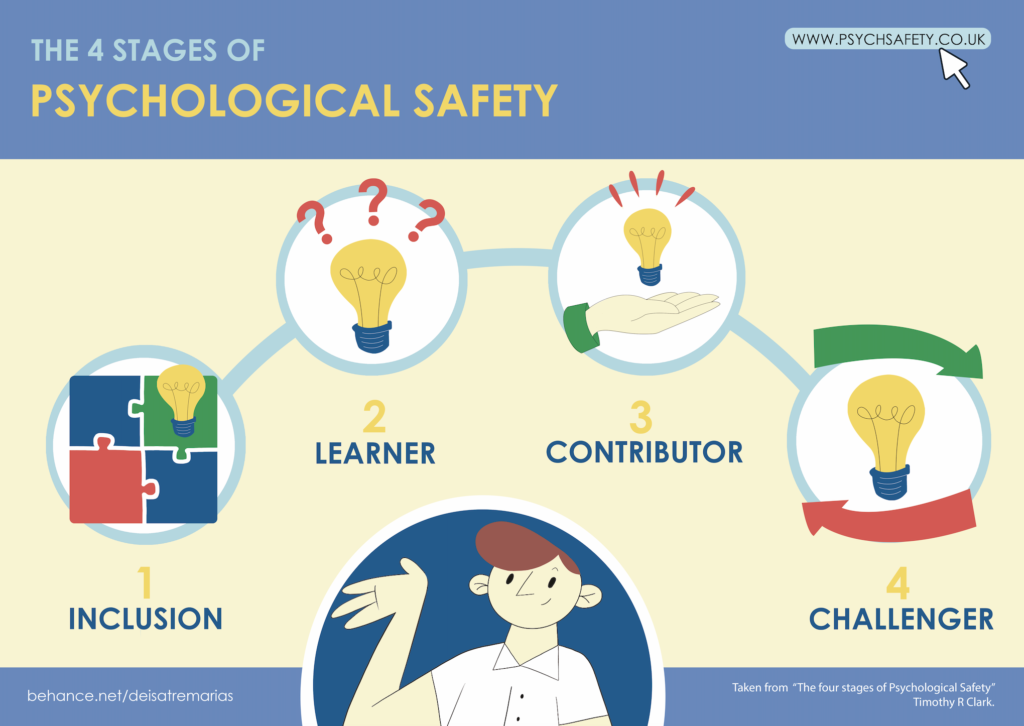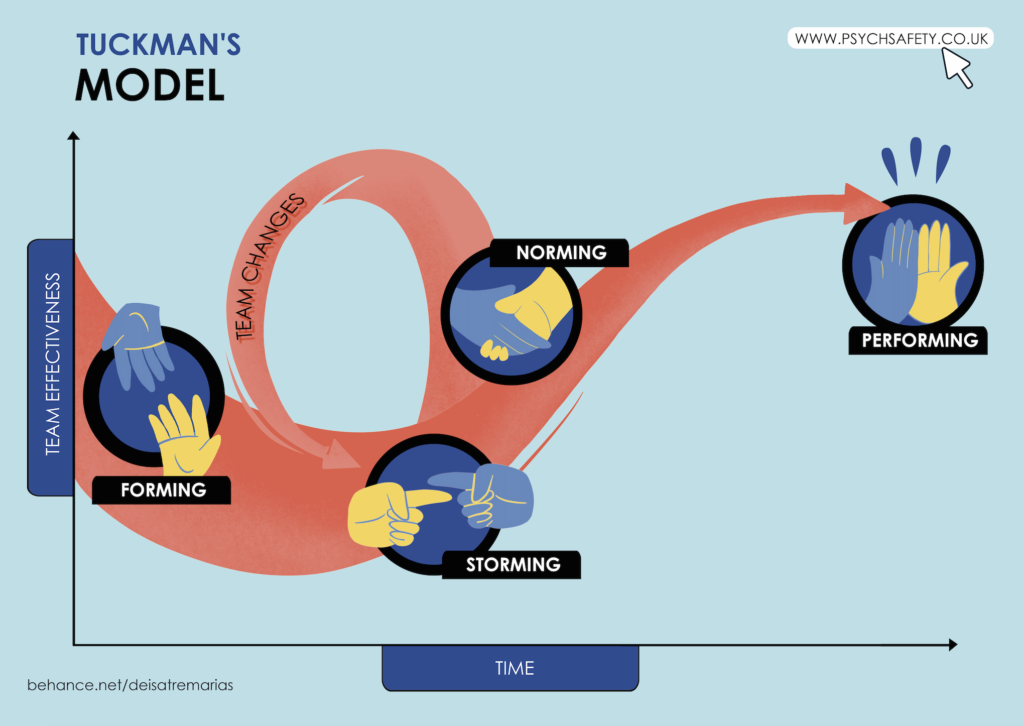Summary - The Four Stages of Psychological Safety
Timothy R Clark in his book “The Four Stages Of Psychological Safety” describes a conceptual model of four “stages” of psychological safety that teams can move through, progressing from stage 1 to stage 4.
 These four stages are:
These four stages are:
- Inclusion Safety – members feel safe to belong to the team. They are comfortable being present, do not feel excluded, and feel like they are wanted and appreciated.
- Learner Safety – members are able to learn through asking questions. Team members here may be able to experiment, make (and admit) small mistakes, and ask for help.
- Contributor Safety – members feel safe to contribute their own ideas, without fear of embarrassment or ridicule. This is a more challenging state, because volunteering your own ideas can increase the psychosocial vulnerability of team members.
- Challenger Safety – members can question others’ (including those in authority) ideas or suggest significant changes to ideas, plans, or ways of working.

The first stage is inclusion safety. We all want to feel included. We long to belong. We humans need to be accepted in a team before we can be heard, so essentially the first stage is simply being comfortable being present. This stage means all members but be included and welcomed – without discrimination regarding gender, age, social background, sexual orientation, neurodiversity or anything else.
The second stage is learner safety – and this means being able to ask questions, give and receive feedback, experiment, and make mistakes. Team members at this stage will provide feedback to each other, and ask for feedback themselves.
The third stage is contributor safety. This means being able to participate as a member of the team, contribute ideas and suggestions, and raise threats and risks using members’ individual talents and abilities to contribute to the team without fear. At this stage, retrospectives and “post-mortems” become very powerful practices.
The fourth stages is challenger safety. This means being able to challenge the way the team works, come up with new ways of working, behaviours, and challenge the ideas of others – even the ideas of senior members. This is the most powerful “stage” of psychological safety, as it not only allows new ideas to surface and learning from mistakes to occur, but it can prevent potentially bad ideas from getting to the real world. You could argue that disasters such as the VW emissions scandal, Enron, or the global financial crisis may not have occurred if the teams in those organisations had possessed challenger safety.

One of the other interesting things about these four stages is that if someone on the team is at a significantly different stage to the others in the team, it can feel highly discordant. It’s important to think about increasing the psychological safety of all the team and bringing everyone one along together at a similar pace.
Happiness Precedes Success
Another useful model for team development is Tuckman’s Model of Team Development, where teams “Form”, “Storm”, “Norm”, and finally, “Perform”. It is only in psychologically safe teams that true performance will be reached, since this stage requires the ability for team members to admit and learn from mistakes, and to contribute and challenge ideas. Reaching this stage, as a leader of a team, is your goal. Teams may cycle back and forth through norming and storming as changes occur, such as members joining or leaving, challenges being faced or team environments changing. If you download the psychological safety action pack, the practices and processes within it will help you take your teams through these four stages, and help you build and maintain high performing teams.

